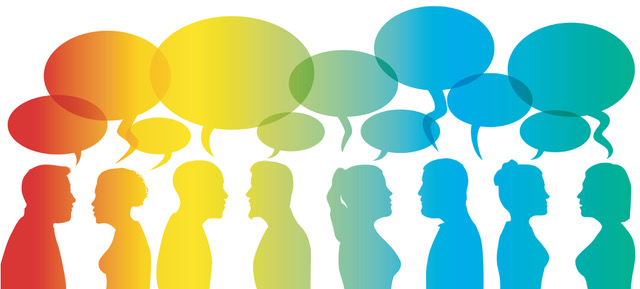By Judith E. Glaser | psychologytoday.com
Published: February 22, 2015
When my husband, Rich, takes a shower and the soap is too small to use again, he opens the shower door and sees if he can make a basket by tossing it into the bathroom sink. It is not as easy as it sounds since the soap is wet and slippery and when it hits the slope of the sink it shoots out - so you have to get your toss just right.
However, one night I got 'tossing envy' and tried a shot - and I found out it was a lot of fun. What was most interesting was what happened - I hit the front rim of the sink the first time, hit the back rim the second time, and hit the winning shot on the third try!
I, as an organizational anthropologist – and my husband – as a biochemist - often look at patterns together. Even soap tossing is a pattern hardwired for learning. Looking at how the body and mind, overcompensate to get the toss right is a great metaphor to look at how we create success with others!
How our Mind Readies us for Mutual Success...
Haven’t we all overcompensated when we found ourselves in a difficult conversation? Someone proposes an idea we haven’t thought about before and our first reaction is to resist – holding an opposite opinion – hitting the other rim. We get addicted to our own ideas and we defend them – we overcompensate in the opposite direction. The other person defends back and using the soap metaphor – we keep hitting the opposite rim.
We may sit there silently resisting what was proposed – we might even listen while resisting and move into a skeptical stance. We may even decide to wait and see what else they have to say before we jump in again and defend our ideas. We know how good it feels to be right, and win a point - it’s addicting to win! Winning produces higher levels of dopamine, which is ‘the reward’ hormone in the brain. Our brain craves feeling good and winning a point elevates pleasure – our pleasure...
How does ‘Soap Tossing’ Develop Conversational Intelligence®?
Experimenting with others ideas is often – at first – not as pleasurable as developing our own ideas and sticking to them, yet today’s world is a WE-centric world and ideating alone is not as valued as innovating or co-creating with others. So how do we move from resisting others ideas, to experimenting and even co-creating with others?
When we are in a team or a large organization, we often aspire to co-create with others - it feels great! When we work in concert with others and come up with great ideas – it feel exhilarating!
What stands in the way? Getting people to listen, building trust with people who have been untrustworthy in the past, activating energy when commitment is low, and changing people’s minds are all barriers to co-creation. Too often we ‘toss the soap, and hit the rim’ and get stuck in a pattern that doesn’t necessarily lead to success.
So why - with our teams or our organizations - do we get stuck in one pattern of thought? Why do we miss the learning that comes from experimenting and tossing around new ideas with others?
Neuro-tip: Patterns of Avoidance
New neuroscience research is revealing that our brain is designed to predict the future. If a pattern occurs, our brain detects it, and seeks to use it in the future to anticipate what to do next. For example, if we trust someone, and get burnt, our brain sets up an avoidance (or resistance) pattern awareness detection campaign to ensure we don’t get burnt again. Our brains are particularly more sensitive to detecting the patterns that require protection – it’s an evolutionary asset to our longevity. So when we ‘smell’ deception and distrust, our brain goes into overcompensation by avoiding that person in the future. In fact, we will start to see and label situations and people as ‘distrusting’ even if they are not. It’s how our brain works. So what can we do about it?
Priming for Mutual Success
Priming is a way to interrupt a negative pattern that is preventing our healthy navigating with others. Priming enables us to set up a new pattern awareness detection campaign in our brain that focuses on co-creation instead of protection. For example, if we prime our meetings and our conversations for a win-win (I know - an overworked phrase), our brain will look for that pattern and reinforce it. Our brain will shift from a focus on protecting and shift into co-creating – our brain, in fact, will overcompensate toward the opposite (co-creating)– just as we did when we were adjusting our soap toss in the sink.
Here’s how it translates to building mutual success.
Most people think win-win is when we get someone to agree with us. Not true in the WE-world. Win-win is enabling us to be successful with others by catalyzing new ideas with others – not just getting them to agree with our ideas. Success comes from experimentation and innovation with others – of tossing the ideas back and forth – and of experimenting with different tosses as you all try for a win. Win – Win is not zombie agreement – it is building a new muscle for experimentation and co-creation over resistance, skepticism or wait-and-see.
We can do this by understanding how our conversations work for us, or against us?
What are the Levels of Conversation?
Level I Conversations are Transactional - an exchange of ideas – I tell you something, you tell me something. We are exchanging what we know and what we think. Sounds OK, until someone takes the floor and it becomes a tell-yell-sell conversation. That means that someone holds onto the soap and doesn’t toss it any more. It’s conversational overcompensation in one direction only and it stops our brain from learning and locks it into a pattern of protection.
Level II Conversations are Positional - those in which we become an advocate for what we believe are the best ways to do things. There is a two-way dynamic called ‘advocate and inquire’ however we frequently get sucked into trying to influence others on our behalf. It’s addictive to win and the pattern of winning produces high levels of dopamine, which rewards more desire for winning. Sometimes we become addicted to being right. If we are right, then ‘they’ are wrong, and we activate ‘resistance’ all over again. It’s another conversation overcompensation that locks us into a pattern of protection, not co-creation.
However, there is an antidote for the hole we just dug for ourselves – and for our team. We have to experiment with another level called Level III Conversations. Level III opens our brains’ capacity for generating new habits and new habit patterns – WE-centric patterns – which enables us to innovate as well as co-create with others. This high point in our engagement with others is the most co-creational pattern in Conversational Intelligence.
Level III Conversations are Transformational. These conversations are all about sharing and discovering; they are a different type of interaction dynamic driven by intentional engagement and experimentation with others. Translated into everyday language – it is a pattern of conversations where people are tossing the soap back and forth with each other – building on each other’s ideas, and exploring wild and far-reaching ideas that may even seem outrageous if you thought about them too hard. Some call this ‘possibility thinking’ or ‘pushing the envelope’ or ‘testing the waters’.
When you are playing at Level III you are at the top of your game – in fact you expand the game beyond the obvious – stretching your ‘toss’ to reach farther with others – opening the space for better tosses and better adjustments as you co-create for mutual success. Level III Conversations are Co-Creating Conversations – they create the space for ‘soap tossing’ and pull us into ‘experimenting with new and wildly different plays’ that enable us to land on winning strategies that no one ever thought of before.
Judith E. Glaser is CEO of Benchmark Communications, Inc. and Chairman of The CreatingWE Institute; an Organizational Anthropologist, consultant to Fortune 500 Companies, and author of four best-selling business books, including Conversational Intelligence: How Great Leaders Build Trust and Get Extraordinary Results.









